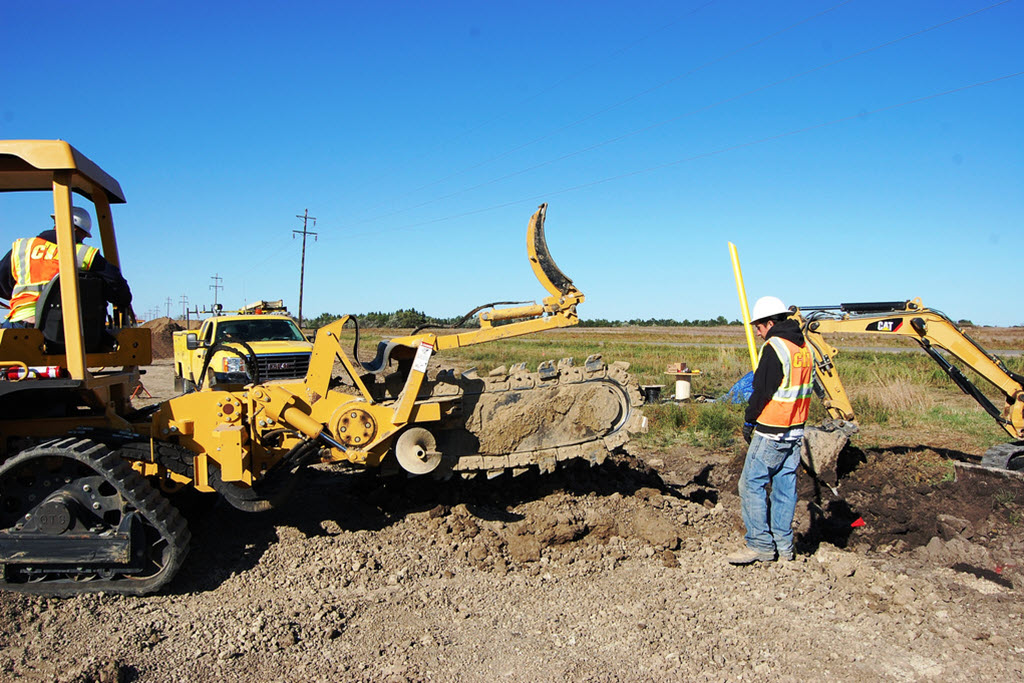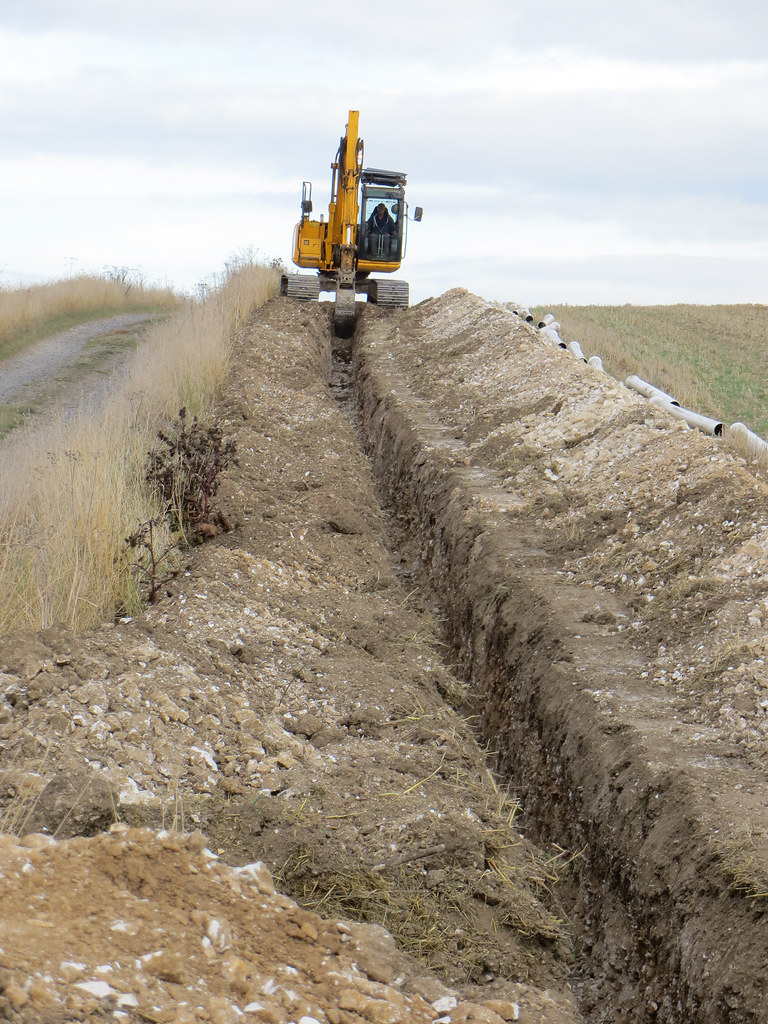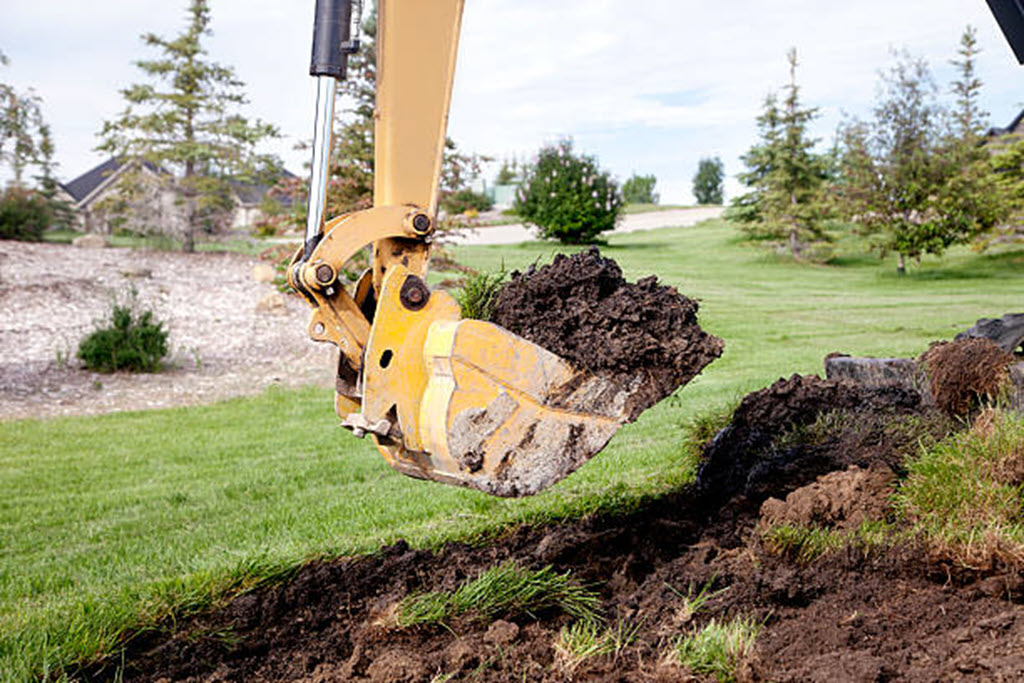Cable Trenchingsin Marine City MI
Cable Trenching Done Right for Secure Utility Installations
We Are Locally Owned & Operated For Over 37 Years
Contact Us Today!
We Serve Businesses In And Around The Following Cities:
About Cable Trenchings
Introduction to Cable Trenching in Marine City
Commercial properties in Marine City are increasingly bolstering their on-site infrastructure to accommodate growing demands for high-speed, reliable internet connectivity. Essential to this progression is one primary service: cable trenching. The need for trenching contractors near me or a trench digging service near me is amplified by the critical function they provide. They form the invisible backbone of a city’s connected infrastructure, paving the way for the efficient operation of businesses and industries.
Understanding the Process of Cable Trenching
Cable trenching, executed by experienced trenching contractors, involves creating a trench or excavation in the ground to lay down necessary cables for digital connections or utilities. A trenching excavation company, like D&J Contracting, carries out this process meticulously, ensuring that the trench is strategically laid out and correctly sized, causing minimal disruption to the surroundings. This process includes activities like trenching for utilities, creating a trench for propane lines, and other specific requirements based on the property’s needs and infrastructure plans.
Real-World Applications and Benefits of Cable Trenching Services
Trenching contractors, such as D&J Contracting, play a vital role in the city’s commercial landscape, cementing their importance as a top trenching contractor. Their services’ real-world applications are expansive, encompassing industries ranging from retail and hospitality to healthcare and education. To illustrate, businesses requiring high-speed internet for daily operations can benefit significantly from the trench digging services of D&J Contracting.
One of the primary benefits of cable trenching is the improved efficiency it brings to businesses. Commercial properties stand to gain from quicker, uninterrupted connectivity and reduced downtime, leading to more streamlined processes. The assistance from a professional trench digger contractor also ensures optimal placement and depth for cables, reducing the likelihood of cable damage and future repair costs.
Noteworthy Cable Trenching Projects
The expertise of D&J Contracting as a trenching contractor has seen them undertake numerous significant cable trenching projects in Marine City. One such project involved trenching for utilities at a sizable healthcare facility. This work incorporated intricate trenching and boring activities to accommodate multiple utility lines, fulfilling the growing needs of the facility. The completion of such sophisticated projects highlights the level of expertise and specialty offered by D&J Contracting in the field, placing them among the most reputable trench digging contractors in the area.
Another project involved creating a trench for a propane line for a local hotel. Owing to their sound understanding of commercial property needs, D&J Contracting managed to meet the requirements seamlessly, reiterating their competence as a trenching contractor.
Choosing the Right Trenching Contractor
Deciding on the right trench digging service to cater to your commercial property’s needs is critical. Factors such as experience, reputation, equipment used, and project timelines, among others, typically determine the efficiency of a trench digging contractor. D&J Contracting, with its extensive experience and commitment to excellence, stands out as a reliable provider of these foundational services, easily found when one searches ‘trenching contractors near me’. The trust and comfort they instill among their clients are testament to their professionalism and quality of service.
Future of Cable Trenching in Marine City
Given the continued infrastructure developments across Marine City and the rise in demand for digitalization among businesses, cable trenching services have a promising future in the city. The likes of D&J Contracting are advocates of modernized, reliable, and quality trenching services, contributing progressively to the growth spurt of the city. The increasing dependence on efficient utility connections propels trenching and excavation companies into an elemental role in the city’s commercial landscape. Fittingly, the search query ‘trench digging services near me’ is likely to surge exponentially in the coming years.
In summary, cable trenching’s role in laying the groundwork for a city’s digital progress cannot be overstated. It is an undertaking best left to professionals like D&J Contracting, who have an exhaustive understanding of the trenching process, its benefits, and real-world applications. They represent solid value for money and ensure cable trenching services evolve at the same pace as the city’s infrastructural growth.
Cable Trenchings Gallery


Call Us Today to receive your Free Quote for
Cable Trenching in Marine City
Serving: Marine City, Michigan

About Marine City, Michigan
The area of Marine City had been Ojibwa territory for centuries before the first European contact. Beginning in the 17th century, French trappers and missionaries entered the territory, followed by settlers in the colonial period on both sides of the Detroit and St. Clair rivers. Farmers developed long, narrow plots that were laid out in the typical rectangular shape of colonial French, with the narrow end along the riverfront. The first Catholic Church was built by French Catholics at Catholic Point, where they had bought land before the United States was formed. French Canadians also lived on the other side of the river in a small farming community known as Petite Côte.
It was not until after the American Revolution that European-American settlers arrived in any number. In the 1780s they obtained a deed for land from the Chippewa Indians. The Americans began to call the community “Yankee Point”, because so many settlers came from the Northern Tier of states, with late 18th and 19th-century westward migration originating from New England and New York. They also called the settlement “Belle River” (Belle Riviere in French), as the French had; this later was applied as the name of a neighborhood.
The village was platted by Americans as Newport in 1835–37. Although never incorporated by that name, it was known as “Newport” for 31 years. In 1865, it was incorporated as the Village of Marine City. Thriving on lumber trade and shipbuilding, the village re-incorporated as a city in June 1887.
The second half of the 19th century was the period of great growth in the village, with many workers employed in the lumber and shipping industries. Rafts of lumber were moved down the St. Clair River in the spring to be worked at Marine City or Detroit. Shipyards built some of the many wooden ships that crossed the Great Lakes. Lake steamers linked passengers with small towns around the lakes. Their decks were full and their flags were flying. Marine City was centered on a park by the St. Clair River, where bands played in the bandstand at City Hall during the summer.
As the lumber business ran down with the exploitation of forests, the area became linked to other resource extraction. Freighters carried iron from Duluth, Minnesota, which had been mined in the Mesabi Range, to Ashtabula, Ohio for steel processing. They passed from Lake Superior through Lake Huron and to Lake Erie. Marine City was known as the town on the St. Clair River where the captains of lake freighters lived. Many of these men and their crews worked for the Pittsburgh Steamship Company. Formed in 1901 by US Steel Corporation, it became the largest commercial fleet on the Great Lakes.
In the 21st century, Marine City has become the home of ten antique stores. The Snug Theater is a 98-seat theater featuring live performances. It will be joined in 2014/15 by a sister theater, The Riverbank Theater, in a former bank building (originally Marine Bank & Trust) down the street. Also joining the two acting theaters is the old Mariner Theatre, which serves as a special event center, movie theater, gallery for fine art Models, and site of the builders model for the ocean-going Titanic. Restaurants and retail in downtown also cater to visitors and residents.
The Heather House, now operated as a bed and breakfast, was built in the Queen Anne Victorian-style. It was completed in 1885 after 2 years of construction for its owner, William Sauber. He was chief engineer for the Mitchell fleet of Great Lake steamers.
- According to the United States Census Bureau, the city has a total area of 2.46 square miles (6.37 km), of which 2.15 square miles (5.57 km) is land and 0.31 square miles (0.80 km) is water.
- It is considered to be part of the Thumb of Michigan, which in turn is a subregion of the Flint/Tri-Cities.
- Marine City can also be considered as in the Blue Water Area, a subregion of the Thumb.
- It is part of the Detroit-Warren-Livonia Metropolitan Statistical Area (MSA) and the Detroit-Ann Arbor-Flint Combined Statistical Area (CSA).
| Census | Pop. | Note | %± |
|---|---|---|---|
| 1870 | 1,240 | — | |
| 1880 | 1,673 | 34.9% | |
| 1890 | 3,268 | 95.3% | |
| 1900 | 3,829 | 17.2% | |
| 1910 | 3,770 | −1.5% | |
| 1920 | 3,731 | −1.0% | |
| 1930 | 3,462 | −7.2% | |
| 1940 | 3,633 | 4.9% | |
| 1950 | 4,270 | 17.5% | |
| 1960 | 4,404 | 3.1% | |
| 1970 | 4,567 | 3.7% | |
| 1980 | 4,414 | −3.4% | |
| 1990 | 4,556 | 3.2% | |
| 2000 | 4,652 | 2.1% | |
| 2010 | 4,248 | −8.7% | |
| 2020 | 4,079 | −4.0% | |
| U.S. Decennial Census | |||
As of the census of 2010, there were 4,248 people, 1,765 households, and 1,117 families residing in the city. The population density was 1,975.8 inhabitants per square mile (762.9/km). There were 2,015 housing units at an average density of 937.2 per square mile (361.9/km). The racial makeup of the city was 96.8% White, 0.3% African American, 0.7% Native American, 0.2% Asian, 0.5% from other races, and 1.6% from two or more races. Hispanic or Latino of any race were 1.7% of the population.
There were 1,765 households, of which 31.1% had children under the age of 18 living with them, 44.6% were married couples living together, 13.3% had a female householder with no husband present, 5.4% had a male householder with no wife present, and 36.7% were non-families. 31.3% of all households were made up of individuals, and 14% had someone living alone who was 65 years of age or older. The average household size was 2.41 and the average family size was 3.00.
The median age in the city was 40.2 years. 22.9% of residents were under the age of 18; 8.2% were between the ages of 18 and 24; 25.8% were from 25 to 44; 27.9% were from 45 to 64; and 15.3% were 65 years of age or older. The gender makeup of the city was 48.2% male and 51.8% female.
As of the census of 2000, there were 4,652 people, 1,860 households, and 1,212 families residing in the city. The population density was 2,120.8 inhabitants per square mile (818.8/km). There were 2,006 housing units at an average density of 914.5 per square mile (353.1/km). The racial makeup of the city was 97.29% White, 0.09% African American, 0.56% Native American, 0.26% Asian, 0.86% from other races, and 0.95% from two or more races. Hispanic or Latino of any race were 1.38% of the population.
There were 1,860 households, out of which 33.5% had children under the age of 18 living with them, 48.2% were married couples living together, 12.7% had a female householder with no husband present, and 34.8% were non-families. 30.8% of all households were made up of individuals, and 14.4% had someone living alone who was 65 years of age or older. The average household size was 2.50 and the average family size was 3.15.
In the city, the population was spread out, with 27.6% under the age of 18, 8.2% from 18 to 24, 30.5% from 25 to 44, 19.4% from 45 to 64, and 14.2% who were 65 years of age or older. The median age was 36 years. For every 100 females, there were 90.4 males. For every 100 females age 18 and over, there were 88.6 males.
The median income for a household in the city was $40,146, and the median income for a family was $47,308. Males had a median income of $39,228 versus $23,677 for females. The per capita income for the city was $19,722. About 7.6% of families and 8.9% of the population were below the poverty line, including 9.0% of those under age 18 and 16.1% of those age 65 or over.
Call Us Today to receive your Free Quote for
Cable Trenching in Marine City
Related Services in Marine City, Michigan
We Serve Businesses In The Following Zip Codes:
48007, 48015, 48021, 48026, 48035, 48036, 48038, 48042, 48043, 48044, 48045, 48046, 48047, 48048, 48050, 48051, 48066, 48071, 48080, 48081, 48082, 48083, 48084, 48085, 48088, 48089, 48090, 48091, 48092, 48093, 48098, 48099, 48225, 48230, 48236, 48310, 48311, 48312, 48313, 48314, 48315, 48316, 48317, 48318, 48397